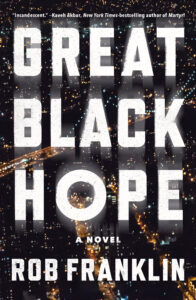Artificial Intelligence (AI) has quickly grown beyond being just an idealistic concept found only in science fiction novels, becoming an indispensable factor across virtually every facet of society from healthcare and finance to transportation and entertainment.
AI technologies are altering how we live, work, and interact with one another while their benefits and challenges continue to emerge. In this article we’ll look at how AI is altering society today, its effects across industries, potential ethical implications of implementations of its technologies as well as what the future might hold for this field of development.
AI: The Evolution of AI
Artificial intelligence (AI) has made great strides since 1951 when Christopher Strachey’s checkers program at the University of Manchester completed an entire game on the Ferranti Mark I computer. IBM Deep Blue defeated Garry Kasparov, chess grandmaster, in 1997; later IBM Watson made use of machine and deep learning developments and won Jeopardy!. In 2011 Watson won once more!
OpenAI launched its GPT model in 2018, marking an exciting step forward in AI development. Now generative AI stands as a cornerstone of contemporary artificial intelligence (AI).
OpenAI has developed its GPT-4o and ChatGPT models, resulting in a proliferation of AI generators capable of processing queries and producing relevant text, audio, and images.
Others have also developed competing models. These include Google’s Gemini and Anthropic’s Claude, as well as DeepSeek’s V3 and R1 models. They made headlines early in 2025 when they achieved parity with other models for a fraction of the cost.
AI is also used to sequence RNA in vaccines and model the human voice. These technologies rely on machine-learning algorithms and models and are increasingly focused on perception, reasoning, and generalization.
AI and the Future
Improved Business Automation
Around 55 percent of companies have implemented AI to varying degrees. The development suggests that many businesses will be automating their processes in the near future. Chatbots and digital assistants offer companies an effective means of using AI for simple conversations with both employees and customers alike.
Artificial intelligence’s capacity for rapidly processing large volumes of data into formats that are easy for people to comprehend can assist businesses with decision-making processes. Leaders can make more informed choices without spending hours analysing each bit of information separately.
Job Description
Fears of job loss have naturally arisen due to the automation of business. Employees believe that AI could perform almost one-third of their jobs. AI has had a mixed impact in the workplace. It’s not equal across industries and professions. Jobs like secretaries, which are manual, may be automated. However, the demand for roles such as machine learning analysts and information security analysts is on the rise.
AI is more likely to augment the jobs of workers in creative or highly skilled positions than replace them. AI will hone both company and individual employee capabilities by encouraging them to learn new skills or take over portions of their role.
Klara Nahrstedt, Director of the Coordinated Science Laboratory at University of Illinois Urbana-Champaign is an internationally-recognized expert in Artificial Intelligence (AI).
Artificial Intelligence: Exploring Its Future Developments
Artificial Intelligence refers to the creation of computer systems capable of replicating human intelligence – including problem-solving and pattern recognition. It also includes decision-making. Machine learning, neural networks and deep learning have enabled AI systems to achieve impressive levels of performance over the last decade.
Recent breakthroughs in AI are due largely to three factors:
Big Data is Available: Huge amounts of data are collected from sensors, devices, the internet, and other sources.
Computing Power Advances: Particularly the use of GPUs and cloud computing.
Better Algorithms: Improved models, including deep learning architectures such as GPT and Transformers.
AI in Healthcare
AI has had a profound impact on the healthcare industry. AI systems are revolutionizing diagnosis, treatment planning, and even drug development.
Diagnostics and Imaging
AI medical imaging systems that use artificial intelligence are capable of analyzing medical images with incredible accuracy (X-rays, MRIs and CT scans). Google DeepMind has demonstrated its ability to detect cancer and eye diseases with similar precision as doctors – potentially eliminating human error and enabling early diagnosis.
Drug Discovery and Development
Traditional drug development processes take years and cost billions. AI helps shorten this timeframe by anticipating chemical interactions with human biology; thus, accelerating discovery time to months rather than years.
Personalized Medicine
AI can analyze a patient’s genetic profile, lifestyle choices and medical history in order to tailor tailored recommendations with improved outcomes and reduced side effects. This approach ensures more successful outcomes with reduced adverse side effects.
Artificial Intelligence in Business and Finance
AI can be found everywhere, from automating repetitive tasks to providing strategic insight.
Financial Services
AI technology is being widely deployed by banks and financial institutions for fraud detection, algorithmic trading, credit scoring, and machine learning analysis of transaction patterns – saving billions.
Customer Service
Virtual assistants and chatbots powered by AI technology are revolutionizing customer service, offering 24/7 assistance without human involvement, while answering a range of inquiries and providing real-time responses to diverse queries.
Forecasting and Decision-Making
AI tools provide businesses with tools for data-driven decision making. These solutions enhance forecasting, inventory control, market trend analysis and more.
AI in Transportation
Artificial Intelligence has had an incredible effect on how people and goods move.
Autonomous Vehicles
Self-driving trucks, cars and drones will soon become commonplace. Companies such as Tesla, Waymo and Uber are investing heavily in autonomous technologies using artificial intelligence (AI) to detect obstacles and respond accordingly.
Traffic Management
Smart city projects typically employ AI systems to reduce traffic congestion and emissions, improve traffic flow optimization, and enhance safety. Machine learning algorithms analyze traffic patterns and adjust signal timings.
Transport and Logistics
Amazon, for example, uses AI to predict shipping times and optimize delivery routes. They even use drones to deliver packages.
AI in Entertainment and Media
Artificial intelligence has made entertainment more interactive and personalized.
Recommender AI/ML For Content
Artificial Intelligence is being employed by platforms like Netflix, YouTube, and Spotify to monitor user activity and provide tailored recommendations.
Create Content
AI models can now generate music, art, and movie scripts. OpenAI’s GPT can create stories, scripts, or poems, while DALL-E can produce realistic images using text prompts.
Deepfakes, Fake Media, and Synthetic Media
AI can produce realistic videos that show people saying things they have never said. This raises ethical questions but opens up new possibilities for film production and video gaming.
AI in Agriculture and Environment
Artificial Intelligence can assist the world’s leaders in meeting its most urgent challenges. Food safety and environmental sustainability are top concerns.
Precision Agriculture
Drones and sensors powered by artificial intelligence gather data about soil conditions, crop health, and weather patterns, giving farmers access to important insights that allow them to optimize planting, watering, and harvesting processes.
Climate Modeling
AI can help scientists predict natural disasters and model climate change scenarios.
Wildlife Conservation
AI systems use satellite imagery and camera trap data to monitor wildlife populations, combat poaching, and track down poaching sources.
Ethical and Social Challenges
AI can be an immensely valuable asset, yet it also poses serious ethical and societal concerns.
Job Displacement
Automation will likely render many jobs obsolete across industries such as manufacturing, retail and customer service; therefore, future workers must adapt by becoming skilled and upskilling themselves accordingly.
Fairness and Bias
AI systems may inherit and amplify human biases, leading to discriminatory results in hiring, lending and policing decisions.
Privacy and Surveillance
AI-powered tracking technologies that monitor individual movements and behaviors raises serious privacy issues as well as concerns over potential government overreach.
Accountability
AI systems often make mistakes that are unclear who should take responsibility, including autonomous driving or medical diagnosis errors. Accountability is essential to building safety and trust between humans and machines.
AI: The Future of AI
Future AI could become increasingly sophisticated and pervasive. AGI would likely play an essential role in society, the economy, and individual identity; its creation could revolutionize healthcare as we know it today.
Governments, businesses, and civil society must collaborate to develop policies that guide AI development responsibly, benefiting humanity as a whole. Therefore, international collaboration is indispensable.
Conclusion of Article
Artificial Intelligence has quickly become a necessity of the 21st Century. With its potential solutions for healthcare, education, climate change and transportation issues looming large over humanity’s heads today and in future decades alike. But to fully utilize its potential we must navigate its risks carefully – our decisions about AI development and deployment now will have lasting ramifications for generations yet unborn.

















































